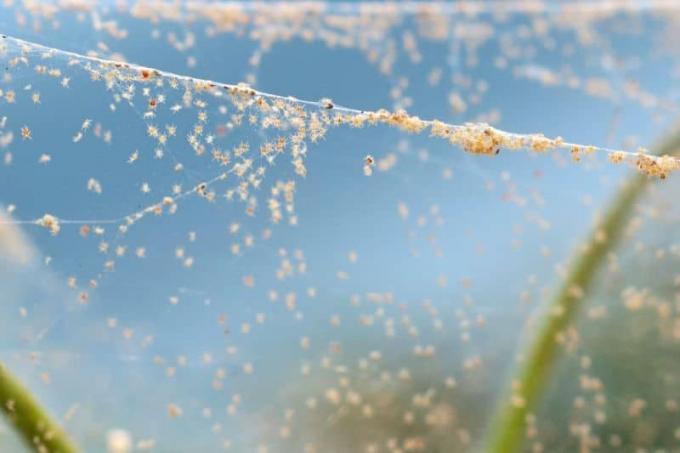
If you love exotic houseplants, you can't ignore the ornamental pineapple. The bromeliad impresses with decorative fruits and enchanting flowers. But what is the reason and what to do if the fruit of the ornamental pineapple turns yellow?
In a nutshell
- Ornamental pineapple needs a bright, warm location
- easy to care for as a houseplant
- Fruit formation after three years at the earliest
- yellow fruits indicate maturity
- However, yellowing is also possible due to care errors or pests
Table of contents
- ornamental pineapple
- fruiting
- yellowing of the fruit
- 1. maturity
- 2. waterlogging
- 3. spider mites
- 4. pineapple mealybug
- frequently asked Questions
ornamental pineapple
The ornamental pineapple (Ananas comosus) belongs to the bromeliad family. She is from South America. With good care, it can live for many years as a house or balcony plant. In a suitable location, ornamental pineapples can reach a height of one meter and a width of two meters.
Tip: The easy-care plant is excellent for beginners!
fruiting
In suitable locations, ornamental pineapple plants can produce flowers and fruit all year round. The location must be bright and warm. Room temperatures of 18 to 25 degrees Celsius are favourable. In no case should it be colder than 18 degrees Celsius.
Tip: In specialist shops, you can often get plants that are already showing signs of fruit.

The Ornamental pineapple fruit are
- smaller than the ordinary pineapple
- edible
- not as juicy as ordinary pineapples
yellowing of the fruit
If the fruit of the ornamental pineapple turns yellow, this can have various causes. Yellowing is not always a problem!
1. maturity
As the pineapple fruit ripens, the initially green color gradually turns pink and yellowish. There is no need for action!

2. waterlogging
When the leaves and fruit of your pineapple turn yellow and the leaves hang limp, waterlogging can be the cause. The otherwise undemanding plant tolerates too much water much worse than drought.
How to properly water your ornamental pineapple:
- Pour fresh, low-lime water into the funnel of the leaf rosette every three days
- Use rainwater whenever possible
- Pour off the water in the trivet
- Let the substrate surface dry between waterings
A notice: Pineapple plants only need a little water! They can handle a few days of drought well. Spray the leaves with water every now and then.
3. spider mites

Ornamental pineapple plants are rarely attacked by pests. However, if the plants are in a warm, humid location, they can spider mites cause the yellowing of the fruit and leaves. You can recognize the plant pest by the silvery spots on the upper side of the leaf and woolly, white webs on the underside of the leaf.
Help:
- Thoroughly shower the ornamental pineapple.
- Rinse the undersides of the leaves as well.
- Wipe the leaves with a soft cloth and let them dry well.
- Treat the ornamental pineapple with a plant strengthener.
4. pineapple mealybug
The pineapple mealybug (Dysmicoccus brevipes) causes the so-called pineapple wilt, which can lead to yellowing of the fruit. It sucks on the roots, causing the parts of the plant above ground to turn yellow and die. It is considered the most dangerous pest of all pineapple plants.
Help:
- Separate the affected plant from other houseplants.
- Repot heavily infested plants.
- Rinse the roots under running water.
- Plant the ornamental pineapples in new soil.

A notice:ladybug are natural enemies of the pineapple mealybug. Enjoy the spotted beneficial insects when you visit your ornamental pineapple on the balcony.
frequently asked Questions
Ornamental pineapple plants only produce fruit after at least three years. It takes up to half a year for the fruits to ripen. Maturity is indicated by the pink-yellow colour. Cut the pineapple with a sharp knife.
Propagation takes place via the tuft of leaves that sits over the fruit. Cut it off, let it dry for a few days and place it on planting substrate so that it can root. It is also possible to propagate via Kindel, which the plant forms. Cut off the offshoots with a clean, sharp knife and plant them in a mixture of potting compost and orchid soil. Roots will soon form in a bright, warm location.
No, the plant does not need to be cut back.
When the temperatures exceed 18 degrees at night in May, the ornamental pineapple can beautify your balcony. She should be brought into the house by the end of September at the latest. The tropical plant can tolerate heat and drought well, but not cold.
